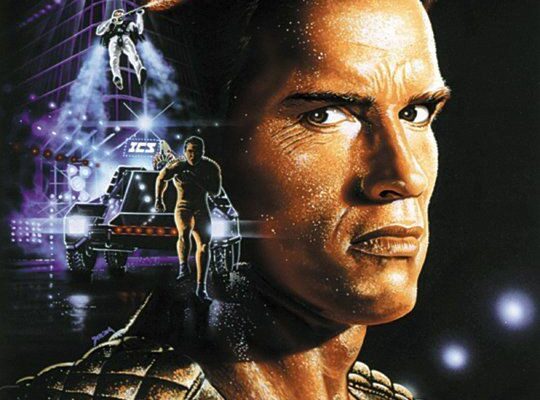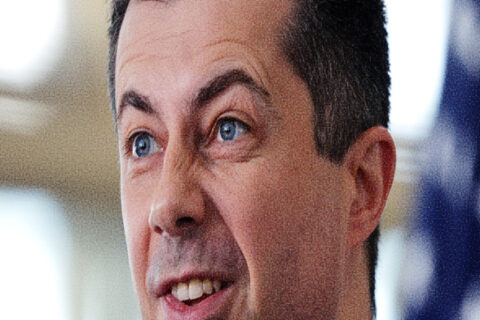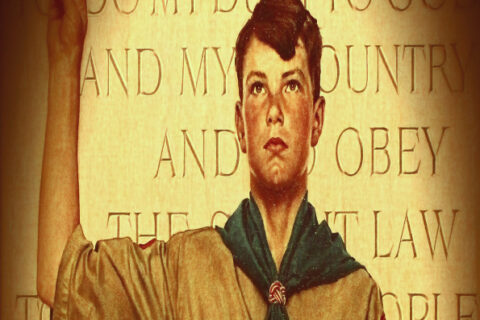“Politics is downstream from culture” Andrew Breitbart famously said, before they killed him. He was just ripping off seminal leftist thinker Antonio Gramsci, but the observation nonetheless remains true. Culture isn’t just a noun after all, but also a verb—to culture something or someone means to grow it, to shape it in a certain way.
American culture has for some time swung between a right-wing or conservative cultural ethos and a left-wing or liberal cultural ethos. Please don’t confuse these terms too much with their political equivalents because that’s not what I’m talking about, although there is overlap. Liberal culture values freedom, tolerance, compassion, and novelty. Conservative culture values order, justice, strength, and tradition. Neither is inherently good or bad, but both can become too extreme, or too stagnant, which is why it then gives rise to its opposite.
A look back at 20th century American history shows a swing from a conservative culture in the 1940s and 50s to a liberal culture beginning in the mid-’60s through the 1970s. This change was reflected not only in politics, in the differences between conservative Dwight Eisenhower and liberal John Kennedy and Jimmy Carter (Nixon was a man against his time), but above all in the culture, in the music, film, and fashion of the eras. Michael Hoffman comments on the abrupt and radical change in American culture after the assassination of JFK:
“What ought to be unambiguous to a student of mass psychology, is the almost immediate decline of the American people in the wake of this shocking, televised slaughter. There are many indicators of the transformation. Within a year Americans had largely switched from softer-toned, naturally colored cotton clothing to garish-colored artificial polyesters. Popular music became louder, faster and more cacophonous. Drugs appeared for the first time outside the Bohemian subculture and ghettos, in the mainstream. Extremes of every kind came into fashion. Revolutions in cognition and behavior were on the horizon, from the Beatles to Charles Manson, from ‘Free Love’ to LSD.”
The 1970s was a morning-after decade, a hangover decade. Even drug use switched from expanding one’s mind to just getting stoned. The vibe was still liberal, but everything slowed down because everyone was strung out from the excesses of the late ‘60s. I will leave aside for now the question of whether the Boomers are to blame for the hedonism and degeneracy they wallowed in during their youth, or whether it was a psyop foisted upon them by the social engineers of the Silent Generation that preceded them. What I want to discuss instead is the decade that came next.
The contemporary dissident/outer/new/fringe/far right, or whatever one wishes to call it, is usually spoken of as a youth movement of Millennials and Zoomers, raised on 4chan irreverence and twitter memes. I have no doubt that this demographic forms a large and important part of the movement. In fact, I believe these children are our future. We should teach them well, and let them—
If you can complete that sentence, you might just be a part of the demographic that I believe forms the actual hidden core of the emerging right: Generation X.
GenX grew up in the 1970s and ’80s, in the aftermath and fallout of the Boomers’ adolescent excess. They—I should say “we” for the sake of transparency—were the last generation to grow up analog, without the internet and without cell phones, yet with a foot in the new tech world and its current challenges. But more important for this discussion is the cultural milieu in which we grew up, which was the reactionary swing back to the right during the Reagan ‘80s.
The reaction against the ‘60s began in the ‘70s in a few separate areas. In film, it began with vigilante and pro-cop films like the Death Wish and Dirty Harry series, which took aim at liberalism’s permissiveness of criminality and degeneracy. In music, the reaction began a little later, with punk rock, which was at first a playfully nihilistic rejection of hippie values and left-wing idealism. The overlap between right-wing vigilantism and punk rock is best exemplified in Taxi Driver’s Travis Bickle, violently disgusted by the filth of ‘70s Times Square—“sick, venal”—and whose mohawk haircut became a staple of the punk scene.
During a right-wing cultural phase, even the left takes on right-wing characteristics. This is evidenced by the aggression of protest music in the ‘80s, in contradistinction to the soft, mellow feeling of ‘60s protest songs. Compare Dylan’s “Blowin’ in the Wind” with Genesis’ “Land of Confusion” or Springsteen’s “Born in the USA.” Whereas during the ‘60s, even right-wingers were inclined to wear their hair longer and sport sideburns, in the ‘80s even the liberals dressed like punks or preppy fascists. Ethos is destiny, as Heraclitus said. And this reactionary ethos is what shaped the childhood of an entire generation that grew up in that decade.
It is well documented that ‘80s kids were a latchkey generation. Boomer parents were so self-absorbed that they scarcely remembered that they had kids at all, and couldn’t be bothered to do much actual parenting. We were the first generation to experience large numbers of divorces and the rise of illegitimacy, therefore many of us grew up in broken, single-parent homes. What all this means is that popular culture took on a much greater importance in our lives than it might have otherwise. As GenX rapper Slug from the group Atmosphere put it, “My best friend was my TV / Game shows and cartoons / substituted for puppies, rainbows, and balloons.”
Cable television and VCRs became household staples in the 1980s. For the first time, uncensored R-rated movies were available on demand inside the home. And what were the best things about uncensored R-rated movies for a young boy? Sex and violence, of course. Late nite Skinemax softcore skin flicks, and shoot-em-up action movies with ripped alpha male anti-heroes who beat the &%$! out of bad guys and who always scored with hot chicks. (Honorable mention to volcel heroes one sees in ’80s action flicks, especially the martial arts variety, because, as Coach Mickey said to Rocky, “Women Weaken Legs.”)
We can have a laugh at some of the schlock that was produced during this era—for a good overview of some of the best of it, see the documentary Electric Boogaloo: The Wild, Untold Story of Cannon Films. But whereas the ironic soy hipster response is to dismiss this entire ethos and decade as an absurd fantasia of over-the-top machismo, implicit white supremacism and latent homoeroticism—because every college graduate knows muscles are gay—the truth of the matter is that the best of ‘80s reactionary culture hearkens back to the adventurism and masculine heroism that lies at the very foundation of Western civilization in tales such as the Iliad, the Odyssey, and the Aeneid, all of which would be denigrated as mere “genre fiction” were they written today.
The quintessential American myth is a lone man with a gun who cannot trust on a higher authority but knows what is right whether pioneer, cowboy or Dirty Harry. Boys who grew up in the 80s looked up to the heroic characters played by Arnold Schwarzenegger and Sylvester Stallone, characters who exemplified bravery and strength, not least of all through their bodybuilder physiques. Both action stars played heroes who would have to go outside the broken legal system to protect women whether family or love interests. The troubled solitary warrior John Rambo, or Martin Riggs from Lethal Weapon, is a variation of the Achilles character archetype, while clever Indiana Jones is a modern Odysseus.
Jonathan Bowden correctly said that the spirit of the heroic was not killed in modernity, it was only displaced into “junk films and comic books.” So what happens to a generation that is raised on the heroic in just these forms? In the case of GenX, after a decade of action film heroism—and its accompanying soundtrack of power ballads, hair metal, and synth—there was a cultural shift just as profound, in its own way, as the one highlighted by Michael Hoffman in the above quotation about the post-JFK ‘60s. In true Hegelian fashion, the Reagan reactionary ‘80s gave way to its own reaction, which was late ’90s Clintonian neoliberalism.
The ‘90s began a cultural swing back to liberal dominance that only came to an end with the election of Donald Trump in 2016. All of the old left-wing causes of the ’60s and ’70s, which had to some degree faded into the background during the ’80s and stuffed in a trunk by the Clinton campaign of ’92, began to once again assert themselves and to attach themselves to the triumph of Western liberalism over Soviet communism. Feminism, racial grievance politics, gay rights, all reasserted themselves and gained moral force within the culture. The television shows began to reflect this revaluation of values in the types of characters they portrayed and the kinds of values they espoused. Hardness and heroism gave way to a cynical overlay of softness and sensitivity, essentialized in Bill Clinton’s catch phrase “I feel your pain.” (‘80s action heroes don’t feel your pain, they make you feel pain, then they say something witty about it.)
The shift in popular music in the early ’90s coincided perfectly with the shift in political leadership, with Bill Clinton winning election the same year that Nirvana and grunge displaced hair metal at the top of the music charts. Hair metal, whatever its faults, was music that celebrated partying and good times. Grunge was angst, moping, whining and screaming; despair-mongering junkie music. No metal band ever went to bat for liberal politics the way Kurt Cobain did in the liner notes to the Incesticide album. And when he killed himself (or got offed by his wife) two years later, it was only the logical and predictable outcome of this new white leftist ethos. That is why Cobain is still held up as an icon to this day: because what white liberals ultimately believe is that they should kill themselves.
For the kids who grew up wanting to be like our heroes in action films and adventure tv shows (The A-Team, MacGyver, Airwolf, Magnum PI, Bring ‘Em Back Alive, the list is endless—and don’t even get me started on ’80s cartoons) the ’90s cultural shift was a giant mindfuck. We entered college hoping for something like Animal House, and instead we got PCU, professors and the new popular culture telling us that all that stuff we grew up loving was nazi, patriarchal, racist, evil, or all of the above and needed to be deconstructed, dismantled and shunned. Real heroes aren’t explorers, adventurers, or warriors—real heroes are nurses.
There was a dearth of political options from the ’90s until Trump. Pat Buchanan and paleoconservatism were always admirable, but as a movement it suffered from still allowing the left to hold the moral high ground, and therefore needing to always censor itself, apologize, and pretend to kowtow to values it didn’t really hold anyway. Anti-globalization was mostly a left-wing movement, which coalesced around Ralph Nader’s two campaigns for President, which went nowhere and achieved nothing except perhaps to swing the 2000 election to George W. Bush. Ron Paul came along in ’07 and did the best he could under the circumstances, but was simply too good a man for the dirty world of politics. Smaller dissident movements had even less power and more unsavory elements.
During this time, the culture only drifted further and further from the values embodied in the ethos of ’80s culture. Much of GenX went along with the zeitgeist, because as they learned as children of divorce, that is what you have to do to get along in society. Many of us felt that those values we had caught a glimpse of in our younger days were just dreams and stories, things to be put aside for the sake of “real life,” which was really about paying bills and having a career and going to winebar with gf. After all, that’s what everyone else does. That’s what they do on Friends.
When the dissident right began to take shape perhaps ten years ago, mostly online on various platforms, and under different names at different times, a good number of the people involved were GenXers who were never entirely able to let go of the vision of life that had formed during their childhood in the reactionary ’80s, who were never quite able to trade The A-Team for Friends. People who had only become more and more alienated by the far leftward drift of popular culture in 21stcentury America. In the beginning it seemed like it would just be another internet ghetto, like some sort of obscure fan club for people into Ernst Jünger novels and Julius Evola books.
Then Trump happened. The year 2015 marks the turning point, the swing back to the right for the culture. Suddenly, the younger generation was on fire with an energy not seen for a very long time. Hillary Clinton gave her famous speech, during which a young edgelord yelled out “Pepe!” and the movement has continued on ever since, however divided or distracted. To be clear, I am not referring to “the alt right” or “white nationalism” or any other stupid label or ideological construct that attracts feds. I am talking about a general cultural shift, a cycle of nature which is both predictable and unavoidable. Regardless of what happens with any particular political movement, even Trumpism, this rightward drift will continue, at least until its time is up, and the pendulum swings back the other way again.
For those of us who belong to Generation X, the feeling is something of a second childhood. Part of this I think is seeing the younger generation discover and rework elements of ’80s culture, such as synthwave music, a staple of ’80s movie soundtracks. I first noticed this in the now classic Drive, the opening credits of which are an obvious homage and throwback to ’80s neon noir films like Michael Mann’s Thief. Or to see old ’80s franchises like The Karate Kid not merely resurrected for nostalgia’s sake, but reimagined and used as a platform to promote right wing values and criticize liberal culture, as in the Cobra Kai show.
The most important development, in my opinion, is the loose knit world of “right-wing bodybuilders” and “raw egg nationalists” that is sometimes called “frogtwitter,” “surf right,” or other esoteric names that I readily admit I’m not cool enough to know about. It’s the most important because it scoffs at ideology and doctrine in favor of raw vitality, aesthetics, and power. It is the first movement that can inspire new art, because it is itself more inspired by the art of the past than any mere “ideology” could be. As I have tried to illustrate in this essay, it is art above all that can inspire new generations, that can shape culture, and thereby shape new politics—because it can shape new men.
In spending some time on twitter recently, I have come to find that there are more GenX guys like me there than I expected. We occupy a unique middle ground, in that we still have some time to grow stronger and improve ourselves—and we can look to still older guys like P.D. Mangan for wisdom and inspiration—but we are also a bit older and wiser than the Zoomers and Millennials. We may also be a bit less broken in some respects, and perhaps a bit more broken in others. When I think about guys who are in their twenties right now, I both envy them for the resources and information they have access to, which my generation didn’t have, and I pity them for having to grow up in a culture that is far more pozzed than the one I had to grow up in. My hope for them, and for those who come after them, is that the resources at their disposal can help them to fight against the degeneracy; to get wise to it faster than we did; to get healthier and stronger, and more independent, and more focused on positive growth and values.
When Boomers took over the reigns of cultural power in the ’90s, almost all the content they produced was about how great their generation was and how groovy the ’60s were and how important their fake and ghey protests were and on and on and on. We’re all sick of it, we’ve all been sick of it our whole lives. They were incapable of seeing anything they did as wrong or misguided, and so they were incapable of passing along any life advice except to hold themselves up as some sort of perfect heavenly pattern to be imitated, however imperfectly. A pattern which of course didn’t even work for them, and worked even less well for succeeding generations because the country no longer had the economic conditions with which to cushion the fall brought about by living a vapid, hedonist lifestyle.
That time has passed. Our job, as I see it, is to create as much positive content as we can, not to glorify our own generation—which has plenty of flaws—but to help the younger ones. GenX right now is perfectly symbolized by the character of Johnny Lawrence in Cobra Kai: a bit battered and broken, a bit worse for wear, but with something hard won to offer, something to pass down. And still with work to be done.
-By Semmelweis

Visit The American Sun at The American Sun






“Anti-globalization was mostly a left-wing movement, which coalesced around Ralph Nader’s two campaigns for President, which went nowhere and achieved nothing except perhaps to swing the 2000 election to George W. Bush. Ron Paul came along in ’07 and did the best he could under the circumstances, but was simply too good a man for the dirty world of politics. Smaller dissident movements had even less power and more unsavory elements.”
As a genX i can speak to most of this rant…………………….
hello, is this thing on????????????? 90’s….Ross Perot????????????????????? Get out of NAFTA? ring a bell? were you smokin’ crack then and/or playing Sonic Hedgehogs/Mortal Kombat? *smile*
“And when he killed himself (or got offed by his wife) two years later, it was only the logical and predictable outcome of this new white leftist ethos. That is why Cobain is still held up as an icon to this day: because what white liberals ultimately believe is that they should kill themselves.”
Cobain???????????? who TF else did these 90’s tweeners in that ‘smells like teen BO/puke field of crap’ have to hold up as some sort of dead idol of excess aka 60’s J. Morrison/Lizard King??? i didn’t stop listening.. the real music stopped being made/played……………….
the softening actually occurred in the 70’s w/MASH’s Hawkeye, who, if not for his genius at surgery, would simply’ve been a leftie pacifist asshole, who stole his best material from Groucho. it came w/the vilification of Archie Bunker, and all White males and has continued apace. you speak to Western White civilization’s heroes which were ‘displaced’ into junk films, junk music, and junk comic books.. exactly who the F do think was responsible for that, eh? didn’t happen by accident. you seem to have all the answers, why not that one? i know who did it, and i know why.
who are we? i see us as as Red Dawn’s Col. Tanner/Powers Boothe…………………
Col. Andy Tanner : Just part of it. I hope our guys are still there.
Jed Eckert : So this is the battlefield?
Col. Andy Tanner : It’s a real war, kid. It’s here every day.
Col. Andy Tanner : Dos vidaniya!
Col. Andy Tanner : Fry ’em!
you are right, there’s much work to be done, as a parent to three twenty-somethings (girls), i can tell you, the pendulum has swung, and thank God for it………………..they are what would be called ‘right wing’, they hate the shit our culture/country have become, and they will not bow to it. *smile*
This is an absolutely fantastic article. I await the future with baited breath.
I’m not a GenX’er, I’m a Millennial. The radical late 90s and early 2000s were the era that shaped my life. This was not just the music of the time, but very the song that did so more than any other.
Deftones – Change (In the House of Flies)
https://youtu.be/WPpDyIJdasg
It is the outgrowth of the darker elements of the 80s, stuff like American Psycho and Nine Inch Nails. For me, the video and the song made such a simultaneous impact and a promise to myself to become a rockstar. This was the song that made me pick up a guitar and start playing during freshman year of high school – year 2000 on the nose.
Personally, I love the 80s though. Not, the synthwave stuff, but the 80s rock – Van Halen, ZZ Top (met them backstage, cool dudes), Mötley Crüe, Poison. Being a rockstar, a fucking wildman, a party animal! But, being a 80s rockstar is out, that charm of the 80s vibe is gone.
As a millennial, my rockstar party is exactly like what you see in the Deftones music video above, I’ve been to that party. A darker aesthetic element worked its’ way into popular culture. Being that I’m a non-Bible thumping conservative who is more familiar with the Nag Hammadi Library than the Bible. I know exactly what I’m looking at and hearing.
Our culture is “out of tune,” both literally and metaphorically. From a music theory perspective 440hz A is different than the correct 432hz A. Even Equal Temperament music itself isn’t correct according to Harmonic Principle.